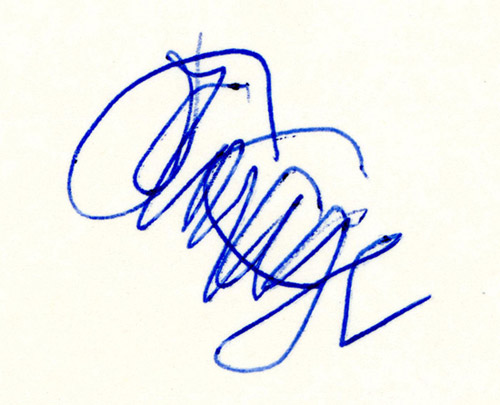
In “The John Cage Autograph” RGB values of the image are converted to chromatic scale piano sounds. By Steffen Kasperavicius.

In “The John Cage Autograph” RGB values of the image are converted to chromatic scale piano sounds. By Steffen Kasperavicius.

»Playing Piano« (2008) is a stripped down, altered and refashioned piano with the addition of microprocessor-controlled machines and appropriated old piano rolls. By Marla Hlady.
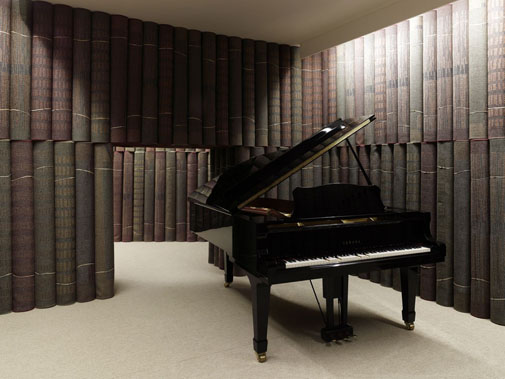
»Plight 2«, 2007, by Matthieu Laurette. An update of the 1985 Joseph Beuys installation »Plight« originally exhibited in London and then bought by and reconstructed at the Centre Pompidou in Paris.
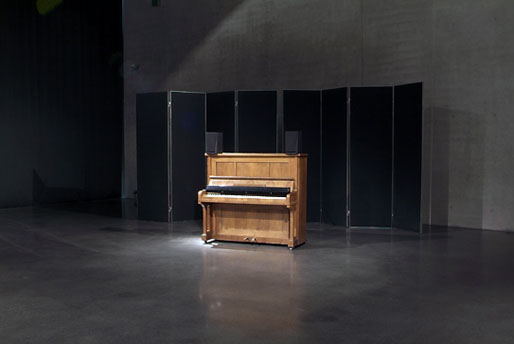
»Pianorama«, 2005. An old fashioned upright piano sits in the middle of the space. There are two small loudspeakers on top of it. A mechanical device (which plays the piano), sits on top of the keys. Out of one loudspeaker comes Janet’s voice and out of the other comes George’s. These voices are discussing what type of music might be appropriate for what seems to be a film they are planning. By Janet Cardiff and George Bures Miller.
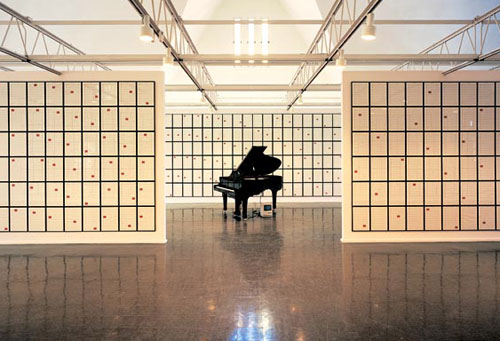
»School of Velocity«, 1995, by Rodney Graham, combines the piano exercise of the same name with Galileo’s equation of the acceleration of falling objects. The result is the piano piece progressively slowing down, with longer and longer pauses between notes. Based on a few bars of music cobbled together out of the score of Wagner’s Parsifal by Engelburt Humperdinck, Wagner’s assistant, to compensate for a problem the opera company was experiencing in synching up its music and scenery. Graham adds a progression of repetitions, whose durations are determined by the prime numbers between 3 and 47, for each of the fourteen instrumental sections that would be playing Humperdinck’s interpolation. The result is an opera that doesn’t end until the year 38,969, 364,735.

The »Pentacycle« (2002) is a vehicle constructed specificly for the abandonned railway Aérotrain near Orléans built in the seventies. By Vincent Lamouroux.
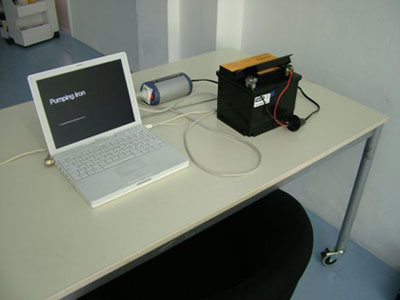
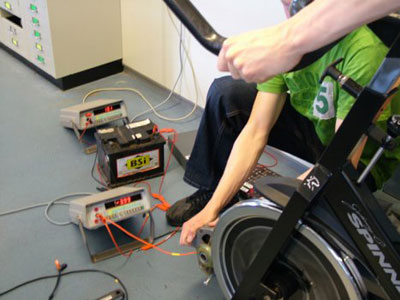
During July 2006 the office of the exhibition space Casco was partially powered by energy generated by the daily spinning classes of a local fitness club. From the ongoing “The Power & Illumination Project” by Annika Lundgren. “The Power & Illumination Project” is based on the idea of using fitness-centers as sources of energy. The kinetic energy being generated here is converted to electrical energy, and is used to produce and mediate knowledge regarding the global energy balance and it’s political consequences.
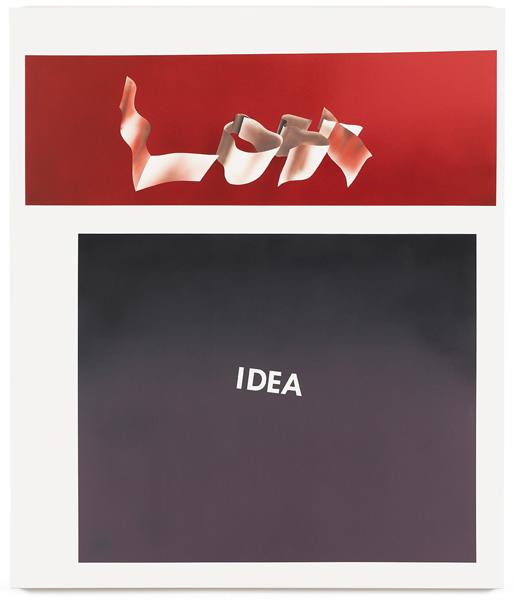
»Lost Idea« (2006),

»All The Sixes In 2006« (2006),
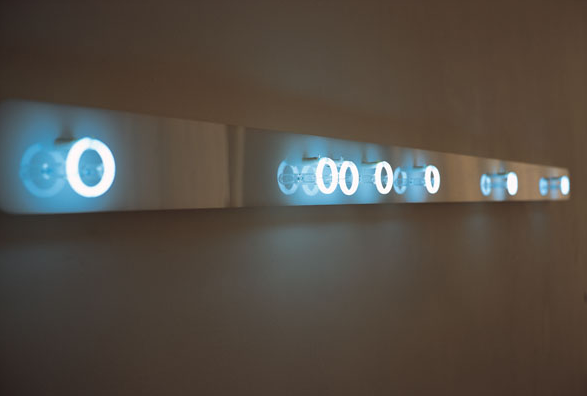
»Sentence Removed (O’s Remain)« (2000) by Jonathan Monk.
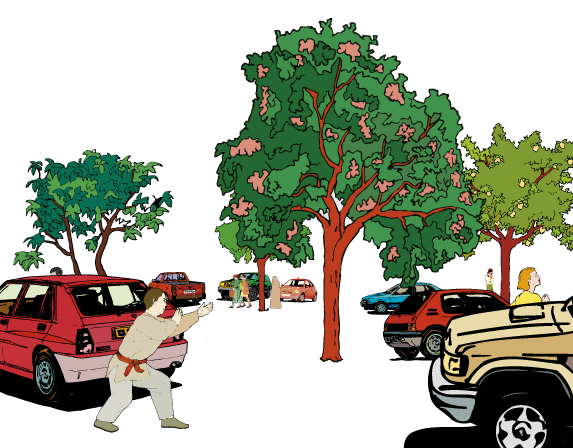
»A man with a rifle« (2000) by Jeff Wall,
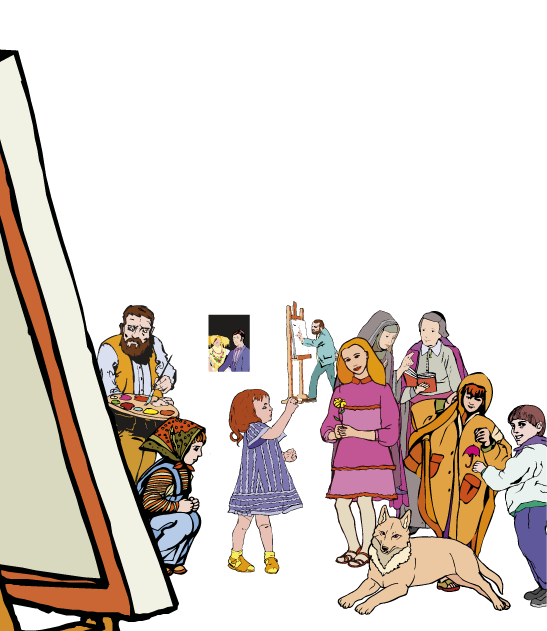
»Las Meninas« (1656) by Diego Velázquez from the series »Configuration and content analysis« (2007) by Georg Schnitzer and Peter Umgeher.